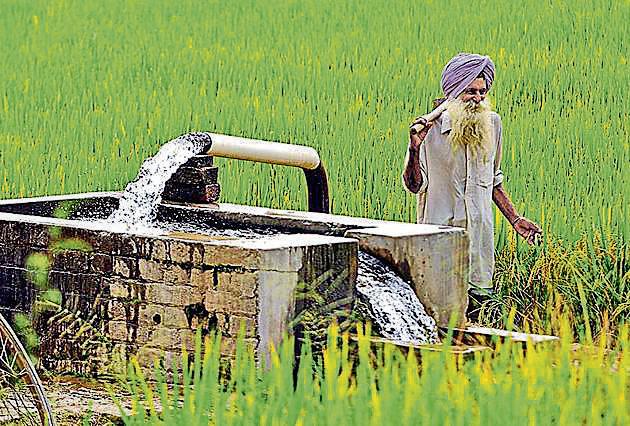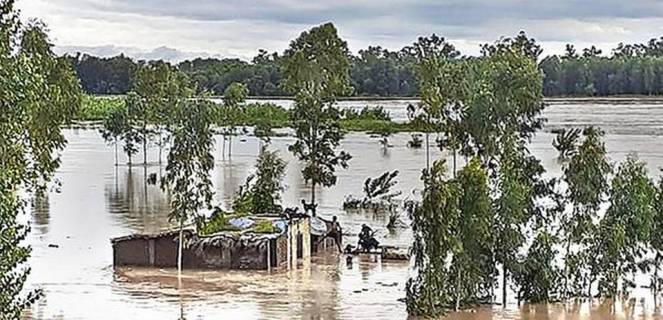
As the temperature rapidly increases across Northern India, Punjab’s tormenting misfortune of power shortage could prove costly for the citizens. Amid the heavyweight paddy transplantation proceeding in full force, the hype across limited power supply has boiled tensions across the state. The agriculture sector has been deprived of procuring the mandated eight-hour power supply; hence the production has been stalled. The worrying repercussions of long power cuts have also been prevalent across industries as PSPCL imposed a two-day compulsory cut for all in-house activities. The government offices have got instructed to regulate without air conditioners following the diversion of power to crops and domestic services.
The unprecedented crisis has sharpened over a couple of days as households in Punjab suffer from extensive temperatures and are left out to sweat in the erroneous atmosphere. Perhaps in everyone’s hindsight, the question is that what has augmented a disastrous crisis in Punjab.
Let’s dwell into the unprecedented power crisis in Punjab-

As we approach the pinnacle of paddy transplantation, the demand for power supply is needed in excessive terms. If we concisely study the requirement in absolute terms, the power demand has extended to 14,225 MW. However, the problem arising with the power utility is the lack of financial assistance being assimilated to them. The current supply only stands at 12,800 MW, representing a massive valuation gap between the Punjab State Power Corporation Ltd estimates. The 1,425 MW gap has triggered the state for a 14-hour extended power cut across the domestic units and industries.
The significant aspect of the bizarre power crisis is the acute shortage of power supply and large amounts of alleged pending power dues. It has manifested yet another jailbreak for the PSPCL as MLAs, and former ministers failed to clear their outstanding bills. A recent outage was showcased when Punjab’s power officials alleged Navjot Singh Sidhu over an Rs 8.74 lakh bill pending his house in Amritsar. We could resonate with how absurdly the woes have worsened in the Northern state by reviewing such instances.
Who has been bearing the consequences of the catastrophe?
Following the dramatic power cut, industries have been forced out of work by compelling them to shut down, ensuring enough power acquisition to the agriculture sector. The farmers have hard strikingly worked their socks off for the remarkable paddy transplantation, and it indeed can’t be lost in a headway. The lack of power supply commenced on the streets as farmers and domestic consumers collaborated to protest against Punjab authorities. In the aftermath of the aggressive behaviour adopted by communities, the complaints are floating across from the industry bodies. They claimed that it is the worst thing they anticipated amidst the pandemic crisis causing turmoil for business activities.
PSPCL bundled down in the grip of a financial crisis. Here’s How:

We should head our attention back to the pending power dues. The Covid-19 pandemic has regressed the incomes of the domestic consumers, and with politicians also abruptly denying paying timely dues, the PSPCL has succumbed to falling short in financial avenues.
Clearance of dues by defaulting government departments is inevitable in proceeding with the elongated failed supply structure. Punjab has been under the cosh of financial limitations for a long and is now reeling from the after-effects. The department is eyeing to complete the pay gap of subsidy in the financial year to eliminate the burden of arrears. According to the calculations dispensed by the Punjab State Electricity Regulatory Commission, the current instalment scheme of subsidy payable is Rs 17,796 crore. It is a mammoth breakdown in the context of the bothering situation of power supply.
Evaluating the discrepancies in the demand and supply factor-
The negligence of know-how in the evaluation of the power demand has emulsified the gap too big. But where has the PSPCL gone wrong in its undertakings? Probably, we should have an outlook on the power supply scenario over the past two years for efficient understanding.
In 2019, the requirement of power at the peak season was 13,633 MW. Following the emergence of the Covid-19 lockdown, the maximum accentuation dropped to 13,150 MW. The prolepsis of the state records was along the shrinking lines, but how absurdly they misinterpreted the citings of power supply. In 2021, the demand significantly upheaved, and it seemed like the PSPCL had no answer whatsoever. It made the arrangements according to 13,000 MW, which reflected a drastic gap in commitments of power supply to domestic consumers. The industries, citizens, and agriculture producers constantly have been harassed under various public utilities, and the government only has itself to blame.
What are the shocking reasons for the unexpected calamity in Punjab?
The imminent shutdown of the foremost thermal plants in the state has been the prominent reason for the power crisis. The closure was the first decision the Elected government took in Punjab, and they reportedly shut down thermal plants situated in Bathinda and Ropar. It accounted for a colossal production loss of 880 MW, and no alternative arrangements have been made until now. However, projects could have achieved a silver lining within one year of shutdown in 2018. PSPCL drafted a recommendation to vent a 100 MW thermal plant in Bathinda, Punjab but the authorities rejected it sternly.
The government has imparted mere excuses for reopening the closed unit of the private TSPL Power Plant at Talwandi Sabo, and it is deemed to be under construction since March 8. The PSPCL claimed that the team had to be shut down due to faulty Power Purchase Agreements, but that wasn’t the reality, as stated by Sra. “ There is no means in PPAs referring to the availability of private plants during the paddy transplantation season. It is astonishing to figure out that the unit has been shut down for four months. There’s absolutely no reason why the financial burdens would get the better of private plants in such a scenario. Why would they expedite repairs,” claimed Sra!

Why hasn’t the government been proficient in arranging alternatives amidst the disparity?
Blaming the government for the nemesis is consequential as Sra earmarked that the officials hadn’t committed to the CMA of PSTCL since its inauguration to the rein in April 2010. All the officers registered under the PSTCL are overburdened, and the CMA is compelled to fulfil his duties under Excise and Taxation. A. Venu Prasad, the brightest star, could have been evaded from his existing responsibilities and appointed as the in-charge of the power supply in Punjab.
How can one expect to foothold so much workload? Nevertheless, the synopsis replicates the government’s failure in planning and timely action, which has deprived households of power consumption. The situation will get problematic, and it needs to be resolved swiftly to avoid further protests and agitations from the industries and farmers.




